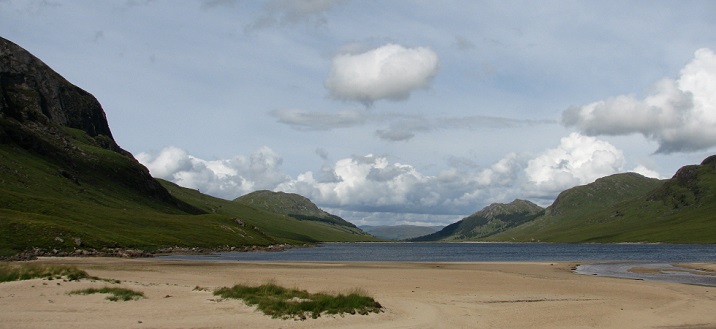
This post takes another look (see here) and (here) at the planning application to build an enormous pump storage hydro scheme between Loch Leambhain, facing Ben Alder, and Lochan na H-Earba.
The Scottish Government’s unaccountable Energy Consents Unit
Generally it is harder to find documents relating to planning application on the Energy Consents Unit (ECU) website than on the Idox system operated by other planning authorities as they are stored under multiple tabs – rather than as a single index – and to access all of them you need to register and log-in. On the Idox system you only have to register if making a comment.
The Earba application (see here) was lodged over a year ago but, unlike planning authorities, ECU provides no information to inform the public how planning applications are progressing or the deadline for comments:

I was informed by other objectors first that the deadline for commenting on this application was early this month and then 24th April. Today, I tried to submit an objection, via the “representations” tab, but received this message when I tried to submit it:

“Unexpected error”! At least I received a message. I heard from a mountaineering club that their comment disappeared into the ether and they never even got an email to confirm whether it was submitted or not.
When I then submitted my objection to the email address provided, I received this reply: “your message has been delivered, but the Scottish Government has changed its email addresses. Please switch to @gov.scot.” My recollection is the Scottish Government changed its email address several years ago!
As of today, 29th April, the ECU have published nine “representations”, most from statutory consultees saying they had no comment to make (the MoD, Perth and Kinross Council as the neighbouring council area etc). Some of these representations were published over a month after they were received: at least the ECU, unlike the Loch Lomond and Trossachs National Park Authority (see here) does not try to cover up how long it withholds information from the public. So far only one objection has been published, from the John Muir Trust, even though I know of several groups and individuals who have submitted objections in the last month. Why the secrecy?
So far ECU has not published any response from Highland Council, the responsible local authority, or NatureScot, the body responsible for Wild Land, landscape, nature conservation. Until they do so the application should still be open for objections and the ECU should allow the public a reasonable period of time to comment on their responses.
The big issues – the Lochan Na H’Earba proposal & Scotland’s energy storage needs
There is no doubt that if the world is to replace fossil fuels with renewable form of energy generation, how to store electricity generated by wind, water and solar is the major technological challenge. In 2023 two major reports were published on this, the first from the UK Climate Change Committee on delivering a reliable decarbonised energy system (see here) and the second from the Royal Society on large scale electricity storage (see here). Neither report envisages much role for pumped storage hydro schemes.
There appear to be two main reasons for this:
1) Contribution to storage requirements
“While additional pumped hydro storage capacity will be helpful, it is clear that it would only have a marginal impact on GB’s need for tens of TWh of large-scale storage to complement high levels of wind and solar.” (Royal Society)
2) Cost
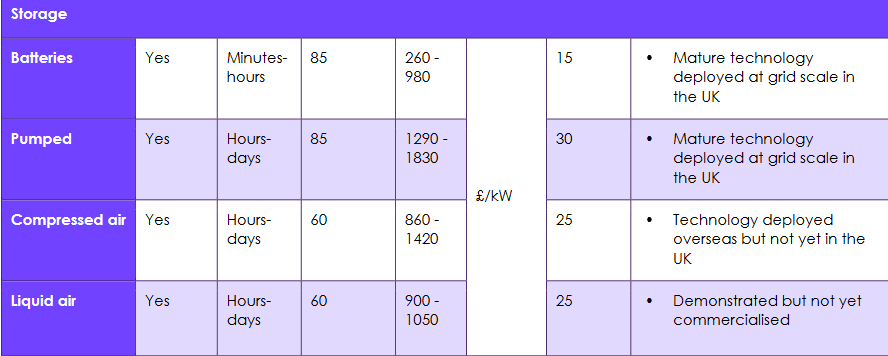
The cost of any electricity generated by the proposed Earba pump storage is likely to be at the upper end of the range, both because of its remote location and because of its design.
Given these facts, there should have been no need for the John Muir Trust, in its otherwise excellent objection (see here), to start with an apology for defending wild land and landscape. Part of their objection provides a succinct summary of the issues relating to the need for this pumped storage scheme in Scotland:
“We are aware that there are differing expert views on the quantity of Pumped Hydro Storage (PHS) needed to decarbonise the electricity grid. Scotland’s Fourth National Planning Framework (‘NPF4’) accepts the need for PHS in principle. The application documents cite the Scottish Government’s target for 15GW, towards which this development would be counted. However, according to the National Grid ESO [Electricity Supply Operator} depending on the Future Energy Scenario used (excluding Falling Short), the required electricity storage capacity from PHS in the UK by 2050 ranges from 4.12 – 6.3GW. From figures provided by the developer the installed capacity of PHS developments which are operational, consented, and in the planning process amount to 11.38GW.
The problem is that the Scottish Government is leaving decisions to the market and not taking a planned approach to determine how best to store power generated by renewable electricity sources. Currently, there is very little understanding by the public about this so the majority, who recognise the urgent need to address climate change, often support renewable developments without question.
The big issues – location
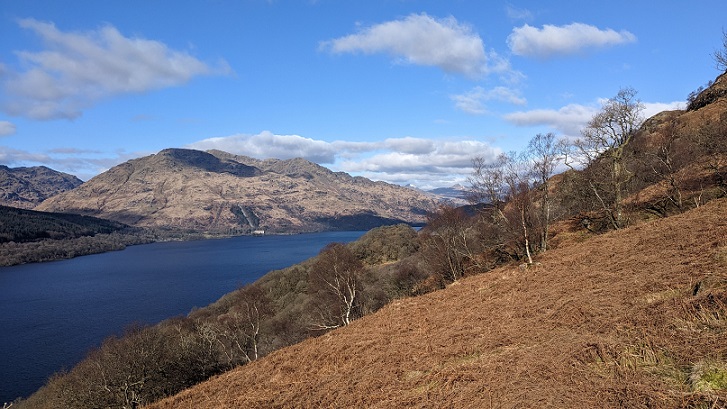
Most of the other proposed pumped storage schemes in Scotland are located above large bodies of water: the Loch Sloy retrofit above Loch Lomond; Coire Glas above Loch Lochy; Loch Kemp above Loch Ness; and the partial retrofit of the Foyers hydro also above Loch Ness. As a consequence of the size of these lochs, when water is pumped up up to the reservoirs above there will be very little impact on their water levels. In the case of Loch Sloy the maximum impact has been estimated as being 1cm, far less than the natural variation in water levels in Loch Lomond.
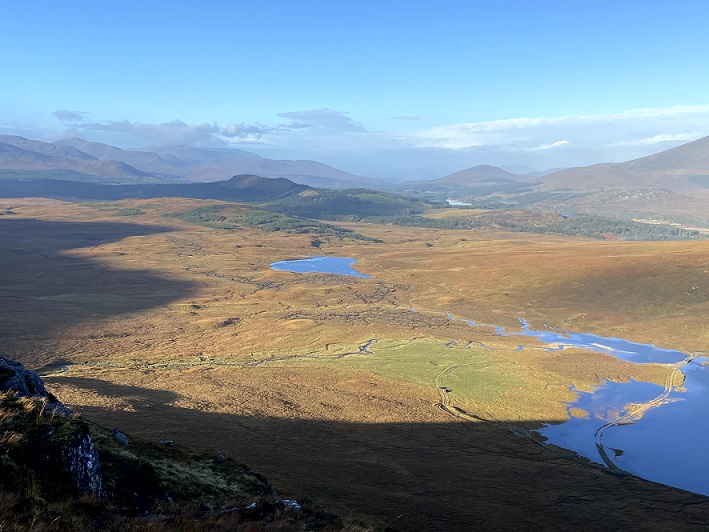
Contrast this with the Lochan na H-Earba proposal (photos above). Because the two existing lochs are so shallow, the development requires them to be dammed at either end and, then because of their relatively small size, the consequent draw down may be as much as 20 metres. That will create huge scars across what is currently an unspoiled landscape.
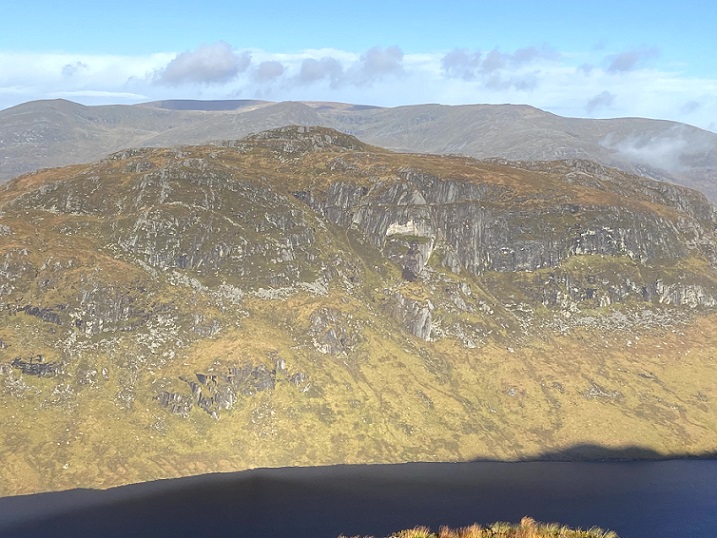
While the upper reservoirs of the pump storage schemes mentioned above will suffer from draw down, in some cases like Loch Sloy the damage has already been done, while in others like Loch Kemp they are in an area of much less landscape significance.

The creation of the new upper reservoir at Earba would require the construction of a new dam wall, c70m high, across Loch Leamhain, creating a massive intrusion into the landscape. This means the development would affect both sides of the ridge between Beinn a Chlachair and Geal Charn, effectively doubling its landscape impact.

The drawdown in the upper dam will be 70 metres and will completely alter the experience of those crossing from Lochan na H-Earba into the Ben Alder area.
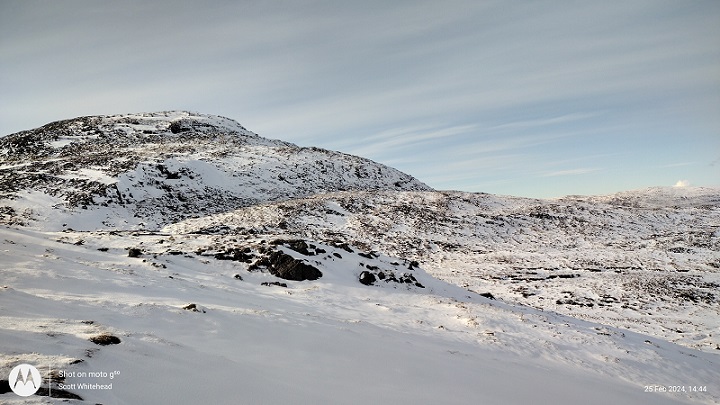
Meanwhile, the dam itself will be visible from below for those walking into the Ben Alder hills from Dalwhinnie.
The landscape impacts of the dams will be made considerably worse by the need to build large new roads – up to 8m wide – to enable heavy machinery and a workforce, which at its peak is estimated to be 600, into the area to undertake the construction work. The fact the location is remote, as all wild land areas are, means an even larger area will be affected.
Even if Scotland were to need more pumped storage, the proposed location of this scheme raises serious questions about the public interest. Tellingly, the Environmental Impact Assessment, which is supposed to consider alternatives, hardly does so. It appears the main reason this scheme is being proposed is that Gilkes Energy worked with the Ardverikie Estate on the River Pattack hydro scheme and both saw a financial opportunity.
It is worth noting that Gilkes Energy is a small but highly profitable company (net profits of over £1m on turnover of less than £4m in the last financial year (see here)) which does not appear to have the financial wherewithal to finance a scheme of this size. Should its application for planning permission be successful, therefore, it is likely to sell the development rights to a much larger company, potentially from abroad. That raises further questions about the national interest.
Other issues
There are a significant number of other serious issues relating to this proposal, many covered by the response from the John Muir Trust:
* The amount of carbon that will be emitted by the construction work, including the destruction of peatland
* The destruction of ancient woodland – so far no objection has been published by the Woodland Trust which normally objects to any development that would reduce ancient woodland
* The proposal for compensatory tree planting behind fences designed to enable the estate to maintain high numbers of deer elsewhere
*The impact on wildlife, particularly the arctic charr which appear to be present in the lochs
The JMT also rightly raises serious concerns about how far the proposed mitigation measures will be applied in practice:
“from past experience with planning applications, we have no way of knowing whether these mitigations, even if required in planning conditions, would be met. Local authorities are under-resourced and over-stretched in terms of monitoring planning conditions and in many cases the progress of implementation of planning conditions is unavailable to third parties. There is little transparency or accountability. For that reason, while the intention of these mitigations may be well meaning, we have no means of knowing whether they will happen.”
The ECU has a particularly awful record in ensuring the planning conditions it imposes are enforced (see here). Ten years later the damage to the landscape and habitats at the Drumochter in what is supposed to be one of Scotland’s most highly protected areas and in the Cairngorms National Park has still not been restored.

One could add further issues. Transport Scotland, for example, has in their response expressed no concerns about increased traffic on the A86 despite the estimated size of the workforce. Shades of Flamingo Land (see here). All such points, however, are relatively minor compared to what I believe are the key issues.
A questionable development in the wrong place
The need for this development in terms of storing energy to stabilise the grid is highly questionable but, even if pump storage is required, it is in the wrong place. Had the Scottish Government adopted a national approach it could have determined just how much storage capacity was required and the locations where pump storage would have least impact on the landscape, freshwater systems, ecology etc. We would then have never ended up with proposal but instead the Scottish Government chose to leave it to the market with predictable consequences. Where this planning application is likely to be most challengeable in planning terms is that the EIA failed to consider these issues properly.
Most people currently accept a degree of environmental damage so long as they are led to believe this is the only way of reducing carbon emissions. That helps explain why, when Mountaineering Scotland consulted their members on how they should respond to the Earba scheme last year, about half the responses it received were in favour of the development. As a consequence it has now only submitted a letter of concern, not an objection. What we now need is for far more environmentalists to improve their understanding of the technical and market aspects relating to renewable energy developments and, instead of accepting development proposals because they appear green, start to take a more critical look which values landscape and wildlife as much as energy. That approach is equally applicable to windfarm proposals as it is to pumped storage.
Unfortunately, the clue to the role of ECU is in its name. Its primary role is not to apply the normal principles which apply to planning applications, or encourage democratic scrutiny of energy proposals, but to CONSENT to renewable energy developments. In doing so it values such developments before other things that matter, like landscape, people and wildlife.
Both the ECU and Scottish Government are, however, still sensitive to political pressure and I would encourage readers who have not already done so to comment questioning the need for this development and emphasising it is in the wrong place. Try using the representations facility (see here) but take a copy before trying to submit your comment so if it is rejected you can paste it into an email to ECDUOnline@gov.scot.

Lots of important points raised. Let’s hope the current political maelstrom doesn’t consign this issue to the remotest back burner. I submitted an objection via the ECU website as soon as the application went live and did not receive an acknowledgement. I have now e-mailed their helpline address to find out what’s going on. Not holding my breath …
The Earba project would destroy an area of outstanding natural beauty. It would be almost a decade before it turns-out any power. There are already commercial technologies for power storage and these are likely to develop further and a number of them can be built on brownfield/industrial locations. See wikipedia, list of energy storage schemes. The Earba project should be frozen for at least ten years whilst more environment friendly technologies are developed. Scotland has suffered enough from large hydro power. It is time to pursue alternative power storage technologies. I am in favour of small hydro developments. There are numerous locations in scotland where useful hydro power could be exploited with greatly reduced environmetal damage. From a strategic viewpoint small hydro could have a valuable role in enhancing stability/security of energy supply. Unfotunately, the current strucure of energy supply is dominated by money making and not ‘what then nation needs’.